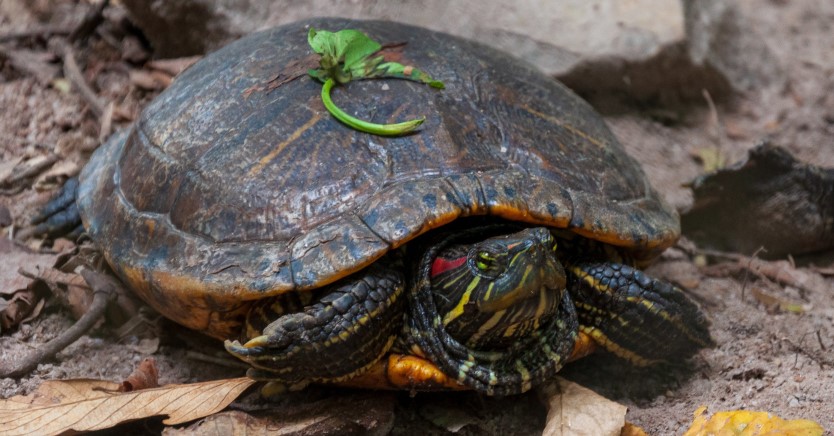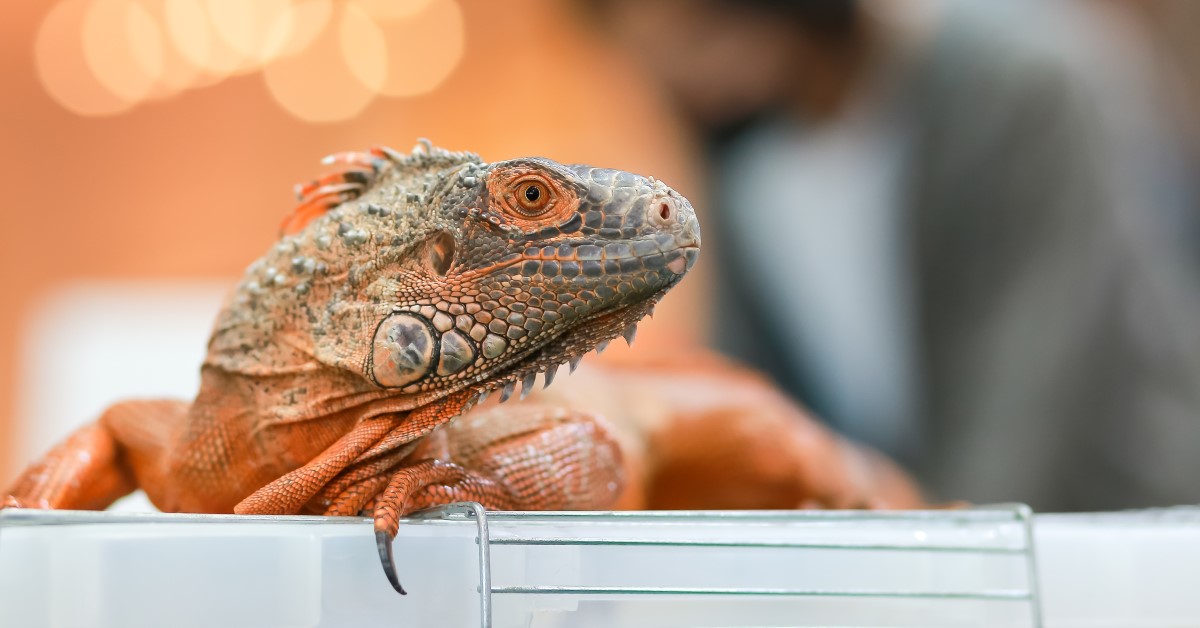Ask Dr. Jenn: Why is My Red Eared Slider Turtle Losing Scales?
My red-eared slider turtle is losing her large underbody scales. I’m afraid it might be sick. We have had her for over 8 years and have never seen this situation with a turtle before. What can I do if the turtle has an infection?

The underbody scales of turtles are called scutes. The scutes are similar to our fingernails – there is a hard outer shell made of a material called keratin and a softer more sensitive layer called the dermis. Turtles are constantly producing new dermal cells and keratinizing older dermal cells. They shed the outer layers as newer layers keratinize.
What you are seeing with your turtle may be a normal process. However, if a turtle’s environmental conditions are not ideal, they can experience inappropriate shedding of the scutes and secondary bacterial or fungal infections.
I love turtles! They are so fun to watch as they gracefully swim in the water or arch their necks as they bask in the sun. I love that they can just tuck their head in and hide whenever they are tired or scared. But turtles can be hard to keep as pets.
A healthy environment is so important to turtles. The lighting, temperature, diet, and overall space need to meet specific requirements to keep your turtle healthy. Even with proper medication, they won’t recover from their illness if one of these factors is off.
Improper lighting is perhaps the biggest problem we see with captive reptiles. Without the appropriate light spectrum and temperature, they are not able to produce Vitamin D. Vitamin D is essential to regulate calcium and phosphorus and keep bones healthy. Without it, reptiles will develop metabolic bone disease, causing a weak skeleton and multiple bone fractures.
Your aquarium must have a proper light that emits both Ultraviolet A and B (UVA and UVB). Most lights emit appropriate amounts of UVA, but a lot of UVB lights are ineffective. It is advised to purchase a UVB Spectrum reader to ensure your pet is receiving adequate UVB rays. The light should be left on for approximately 12 hours during the day and turned off at night. If left on all the time, your turtle is at risk of overheating.
Red-eared sliders are semi-aquatic turtles, meaning they need both water and dry land. At least a 30 to 50-gallon glass aquarium is advised for adequate space. As your turtle grows, you may need a larger aquarium. A rule of thumb is that the length of the aquarium should be 4-5 times the length of the turtle’s shell; the depth should be at least two times the length of the turtle’s shell. A full-grown 12-inch turtle will need about a 100-gallon aquarium.
The water source should be big enough to fit your turtle’s entire body and at a depth where the turtle can rest her feet on the bottom but still have her nostrils above the water so she can breathe. If the water is too deep or the turtle is too weak to stand in the water, she is at risk of drowning. The water's temperature should range from 75 to 85 degrees F.
Turtles also need a dry area where they can bask and warm up their body temperature and dry out their shells. The basking area should be under a heat lamp and provide a temperature range of 85 to 95 degrees F.
In the wild, red-eared slider turtles eat a combination of aquatic plants, small fish, and decaying material such as dead frogs and fish. In captivity, it can be hard to ensure they are receiving the proper balance of nutrients, so I recommend feeding them a commercially available pelleted diet specific for red-eared sliders. You can also offer some “prey” for the turtle to hunt and provide environmental stimulation and add protein to their diet. Prey can include crickets, wax worms, meal worms, shrimp, small fish, and krill. You can also offer leafy greens including collard greens, bok choy, dandelion greens, and kale. If your aquarium is large enough, you can add aquatic plants such as duckweed, water-lettuce, fairy moss, and frog-bit. An adult turtle’s diet should consist of 30% pellets and prey and 70% plant material. Adult turtles eat every 2-3 days. Juvenile turtles need to eat more and are carnivorous. They eat very little plant material.
Once you have made sure you have the proper environment for your turtle, I recommend taking her to a veterinarian that is comfortable treating turtles and other reptiles. The vet can help figure out why she is losing her scutes and if medication is necessary. The vet may also have additional tips on diet and other environmental factors.
I hope that your turtle lives a long and healthy life with you! Please keep me updated on how she is doing.
Ready to start saving money on pet wellness care?
Then take a look at Mint Wellness, the pet wellness plan that provides fast reimbursement on routine pet care. Save on vaccinations, wellness exams, preventatives, dental, and more!
Learn More
